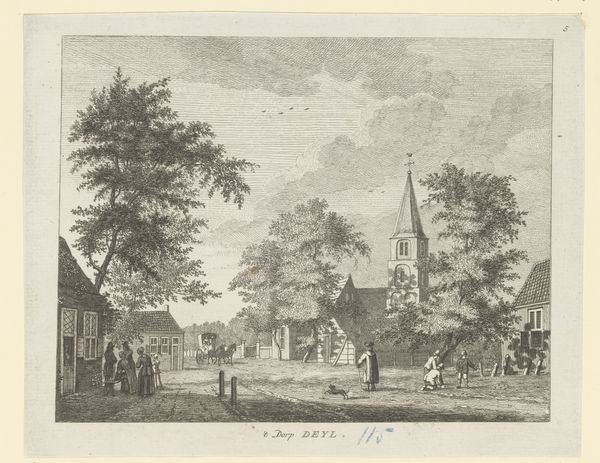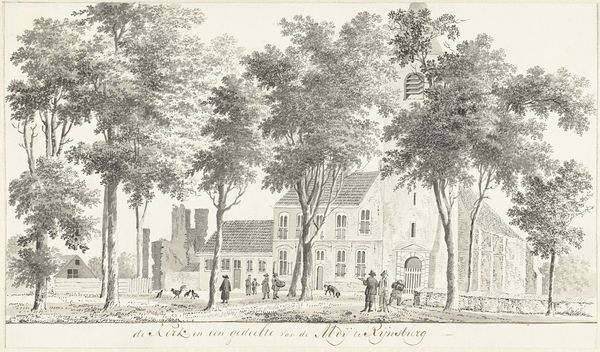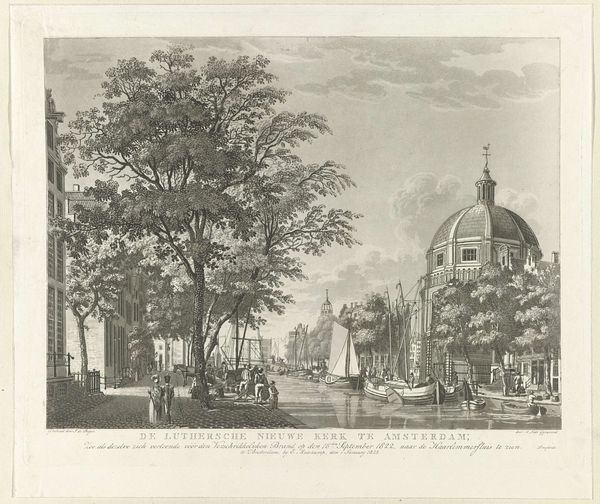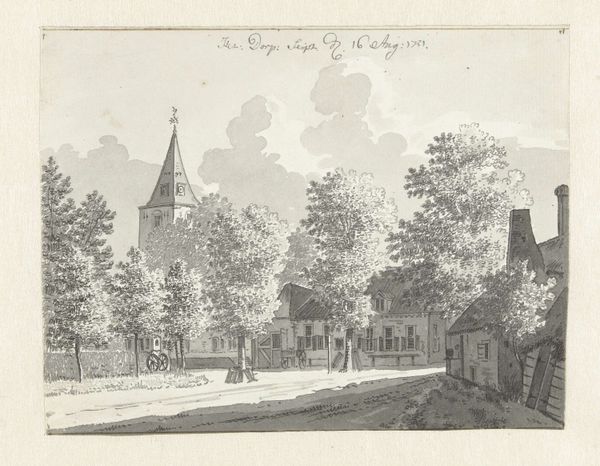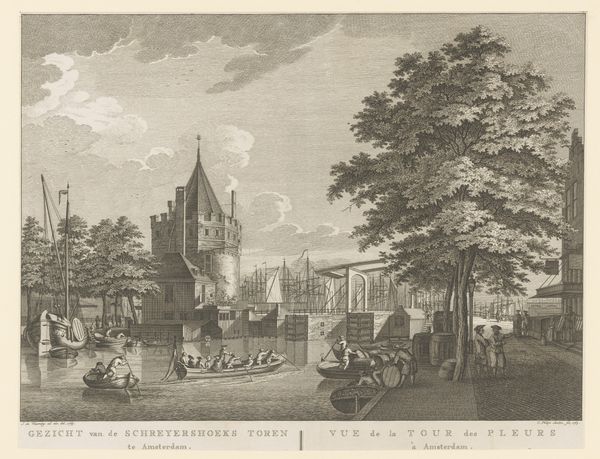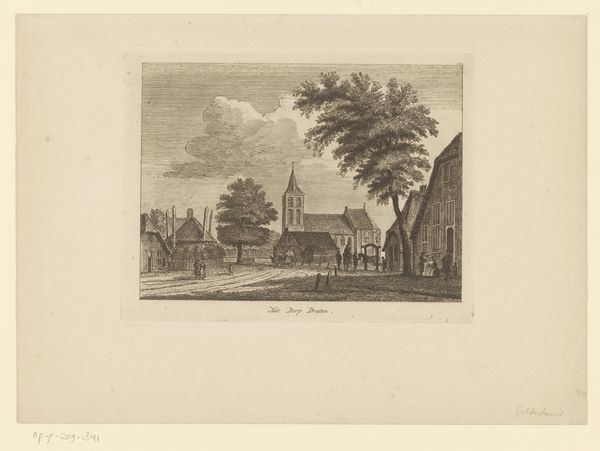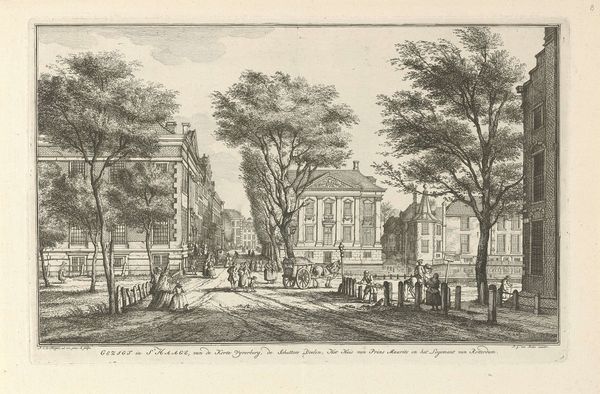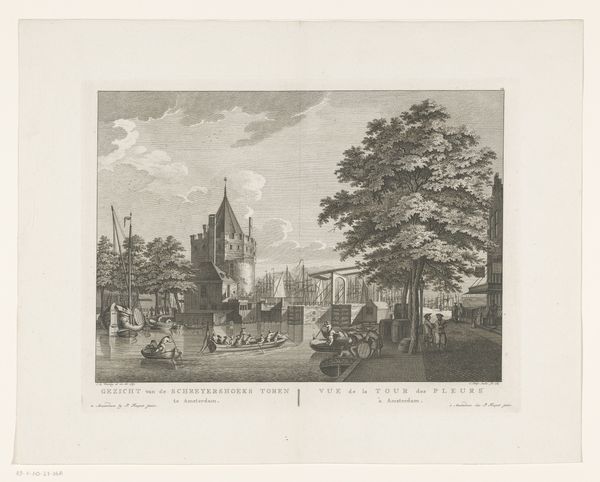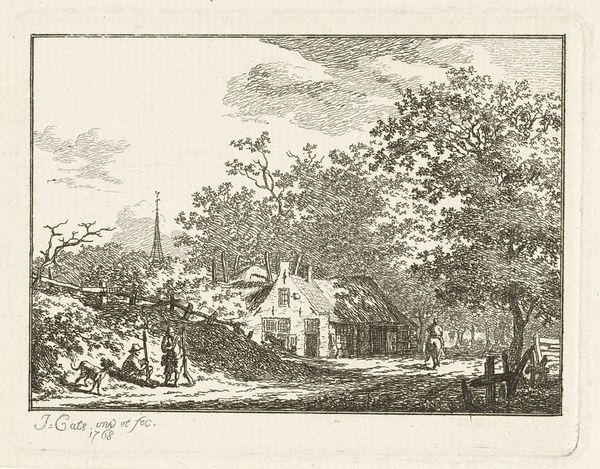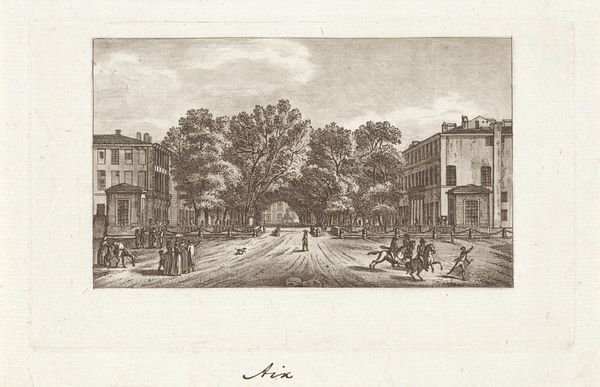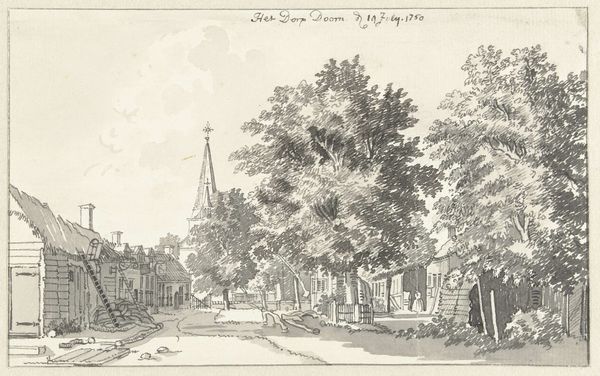
print, etching, engraving
#
light pencil work
#
quirky sketch
#
dutch-golden-age
# print
#
pen sketch
#
etching
#
pencil sketch
#
old engraving style
#
landscape
#
personal sketchbook
#
sketchwork
#
pen-ink sketch
#
pen work
#
sketchbook drawing
#
cityscape
#
engraving
Dimensions: height 166 mm, width 204 mm
Copyright: Rijks Museum: Open Domain
Editor: Here we have Hermanus Petrus Schouten's "Gezicht op Diemen," made sometime between 1760 and 1796. It’s an engraving, quite delicate, and the scene feels so quiet and orderly. What do you see in this piece beyond the obvious cityscape? Curator: This piece speaks to me of the social order embedded in the Dutch Golden Age landscape. Notice how the church steeple dominates the scene, literally towering over daily life, which can be viewed as symbolic of the socio-political hierarchy of the time. Even the placement of figures – their roles and interactions – reflect these power dynamics. Who benefits from this order, and who is marginalized, do you think? Editor: That's interesting, I hadn't thought about the steeple that way. Perhaps the laborers and children in the foreground represent the working class under the church's authority? Curator: Exactly. And what about the buildings, the carefully placed trees? They represent a constructed environment. Who had access to build and own this space, and what does that tell us about their status in society? Editor: So the very structure of the town becomes a reflection of wealth and power. How much of this would an average viewer at the time be aware of? Curator: It would have been their lived reality. These visual cues subtly reinforced existing societal norms, shaping their understanding of their place within the social fabric. It's not just a pretty picture; it's a coded representation of social structures. What do you think about the depiction of animals and its meaning, too? Editor: The animal, or the ox is like another figure in this representation, forced into this place... Food for thought. I appreciate how this helps me see landscapes in terms of social power! Curator: Exactly, and questioning established orders through understanding of art such as this can empower us today.
Comments
No comments
Be the first to comment and join the conversation on the ultimate creative platform.
